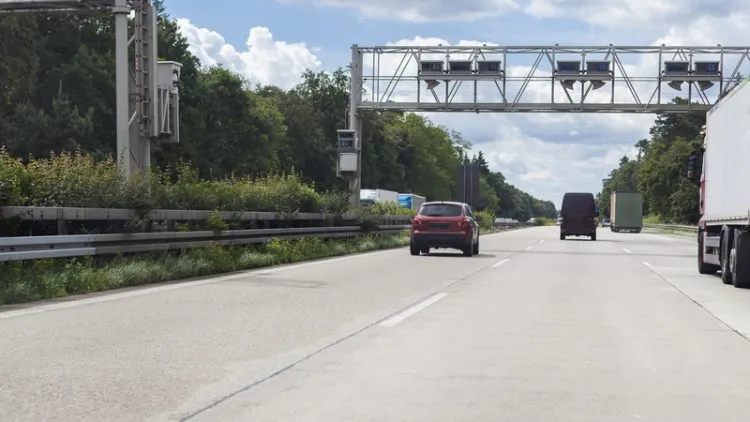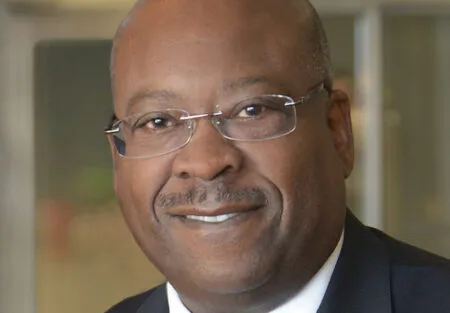In his latest blog, Robert Poole, director of transportation policy at the independent think-tank the Reason Foundation, explores the impact of variably priced express toll lanes (ETLs) on congestion in surrounding areas.
Networks of variably priced ETLs are being developed in more than a dozen large metro areas, and their impact is starting to be reflected in the congestion figures for those regions. Before reviewing what is going on, I want to call your attention to a new (not yet published) paper on the subject from researchers at Cornell University and McGill University. “A Comprehensive Welfare Impact Analysis for Road Expansion Projects” uses transportation data from the Dallas-Ft. Worth metro area to compare, quantitatively, the effects of four possible highway expansion options (in addition to doing nothing): adding a general purpose (GP) lane, adding a high-occupancy vehicle (HOV) lane, adding a priced ETL, or converting all lanes to conventional toll lanes. The priced ETL ranked highest in both regional economic impact and improving system-wide travel time, and was judged to produce the greatest increase in overall social welfare.
Those results are not yet widely known, which may be why ill-informed opposition still exists to some of the proposed projects. But overall, the picture is one of considerable progress toward entire ETL networks in some of America’s most-congested metro areas. Here is a brief recap as of first-quarter 2018.
 California continues to make progress, with the largest set of projects under way in the greater Los Angeles metro area. The biggest project under construction is the I-405 ETLs in Orange County, and the county’s $43 billion long-range transportation plan includes adding ETLs to four additional freeways. Riverside and San Bernardino Counties are moving forward with ETLs for I-15 and I-10, respectively. LA County itself has plans for ETLs on a number of additional corridors, including I-105 and I-605. In the San Francisco Bay Area, the planned network keeps expanding, with projects getting under way on US 101 and I-680 adding important links to the network. A recent Bay Area competition selected the “Optimized Express Lane Network” as one of six transformative projects for the region.
California continues to make progress, with the largest set of projects under way in the greater Los Angeles metro area. The biggest project under construction is the I-405 ETLs in Orange County, and the county’s $43 billion long-range transportation plan includes adding ETLs to four additional freeways. Riverside and San Bernardino Counties are moving forward with ETLs for I-15 and I-10, respectively. LA County itself has plans for ETLs on a number of additional corridors, including I-105 and I-605. In the San Francisco Bay Area, the planned network keeps expanding, with projects getting under way on US 101 and I-680 adding important links to the network. A recent Bay Area competition selected the “Optimized Express Lane Network” as one of six transformative projects for the region.
Colorado DOT continues work on a Denver-area ETL network. By this summer, new ETLs will be in operation on C-470 (the east-west portion of the Denver ring road). Reconstruction of a 10-mile stretch of I-70 is under way, with the addition of ETLs in the median, and further projects will add ETL capacity to stretches of I-25 without such congestion-relief lanes. CDOT is also considering whether to add a westbound ETL to the stretch of I-70 in the mountain area west of Denver, to complement the eastbound ETL already in operation on that segment.
Florida DOT has committed to ETL networks in the state’s four largest metro areas, with a growing number of corridors in operation in the Miami metro area (and more in the planning stage), the huge I-4 Ultimate project under construction in Orlando, the first ETLs due to open very soon on I-295 in Jacksonville, and plans under way for ETLs in the Tampa Bay area including on the Veterans Expressway, on I-75, and on the replacement of the Howard Frankland Bridge between Tampa and St. Petersburg.
Georgia DOT is likewise under way on an ETL network for the Atlanta region. With corridors already in operation on portions of I-75 and I-85, the next major project will be ETLs on north-south Georgia 400 and on east-west I-285 (the northern portion of the I-285 ring road). The ETL network plan includes a number of additional corridors still to be designed.
Maryland, under the leadership of re-elected Gov. Larry Hogan, is proceeding with its $9 billion plan to add ETLs to highly congested I-270 and the Maryland portion of the Capital Beltway (I-495). To link these projects with the emerging ETL network across the Potomac in Virginia, Hogan recently committed to widen or replace the American Legion Bridge, which conveys I-495 across the Potomac (and is wholly owned by Maryland). In addition, the state has begun construction on a project to extend northward the existing ETLs on I-95.
Texas DOT’s plans for additional ETLs in the Austin, Dallas-Ft. Worth, and Houston metro areas have been curtailed by the Legislature’s moratorium on tolling for projects that use TxDOT money and another moratorium on new P3 projects. Still, ETLs authorized previously keep getting built and opened, most recently the 28-mile Midtown Express that opened to traffic in October in the DFW area. In Houston, the $1 billion 10.3-mile ETL project on SH 288 should reach completion this year, and Austin’s first ETLs on the MoPac Expressway are now in operation. And with a $1 billion expansion announced by Apple in the Austin area’s Williamson County, local officials are considering upgrading Parmer Lane with ETLs.
Virginia continues as a leader in developing an ETL network in the DC suburbs. The $3.5 billion I-66 (outside the Beltway) ETL project is under construction. Early in 2019 Virginia DOT announced another $1 billion worth of projects on I-95 and I-495, including three P3 projects to extend I-495’s ETLs 3 miles northward to the Maryland border and I-95’s ETLs southward 10 more miles to Fredericksburg. There is growing support from the business community in the overall DC/MD/VA metro area for a regional ETL network.
Washington State DOT is moving forward with the ETL corridor that will encompass the existing HOT lanes on SR 167 and nearly the full length of I-405, the main north-south route east of Lake Washington. Under construction is a long-needed direct connector between the SR 167 HOT lanes and the existing HOV lanes on I-405 between Renton and Bellevue. Those HOV lanes will be converted to ETLs in a $1.2 million widening project, to match those already in operation between Bellevue and Bothell. Another project, subject to legislative approval this year, would add a second ETL each way on I-405 between Bothell and Lynnwood, eliminating a current bottleneck.
Express bus service is an important complement to ETL corridors (and eventually networks). I’m aware of operational express-bus/ETL programs in Los Angeles, Miami, and northern Virginia, and planned for the I-405 corridor in the Seattle area. If readers know of others, I’ll be happy to note them in subsequent newsletters.
Long-term P3 concessions are a good fit for ETL mega-projects that involve adding lane capacity. Current users of P3s for such projects include Colorado, Florida, Texas, and Virginia, with Georgia and Maryland planning to use P3s for future ETL projects.
Subscribe to the Reason Foundation email newsletter and read back issues here.





